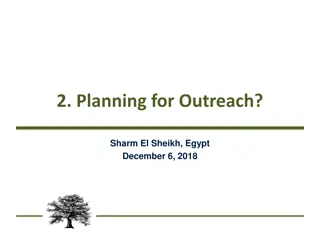Advancements in Non-Orthogonal Multiple Access (NOMA) Technology
Non-Orthogonal Multiple Access (NOMA) technology has revolutionized the way multiple users' messages are superimposed and transmitted over the same frequency simultaneously. NOMA offers enhanced spectral efficiency, massive connectivity, and increased throughput compared to traditional multiple access methods. This presentation covers the advantages of NOMA over OMA and its compatibility with emerging techniques like HetNets, millimeter wave communication, massive MIMO, and cognitive communication. Results and discussions from studies under the 3GPP framework showcase the significant performance improvements achieved with NOMA-enabled systems in terms of ergodic rates and throughput. The presentation concludes with insights on the potential of NOMA technology for future standards-driven research and innovation.
Download Presentation

Please find below an Image/Link to download the presentation.
The content on the website is provided AS IS for your information and personal use only. It may not be sold, licensed, or shared on other websites without obtaining consent from the author.If you encounter any issues during the download, it is possible that the publisher has removed the file from their server.
You are allowed to download the files provided on this website for personal or commercial use, subject to the condition that they are used lawfully. All files are the property of their respective owners.
The content on the website is provided AS IS for your information and personal use only. It may not be sold, licensed, or shared on other websites without obtaining consent from the author.
E N D
Presentation Transcript
PRESENTATION TITLE Name of Session Name of Presenter
Non Non- -orthogonal Multiple Access (NOMA) orthogonal Multiple Access (NOMA) NOMA superimposes message of multiple users and time and transmit over same frequency and at the same time. Advantages of NOMA over OMA (e.g., CDMA, FDMA, OFDMA, TDMA) are improved spectral efficiency, massive connectivity, increased throughput. NOMA is compatible with other emerging techniques, e.g., HetNets, millimeter wave communication, cooperative communication, massive MIMO, cognitive communication, etc. Studied under the 3GPP framework, from Release 14 in 2015 to Release 16 in 2019, where NOMA was formally adopted for downlink transmission in Release 15, also termed as E-UTRA. 28-07-2020 Online Workshop on Standards-driven Research and Innovation in India
NOMA Enabled NOMA Enabled HetNet HetNet (I) (III) (II) I. Represents NOMA enabled HetNet with D2D cooperation II. Shows Carrier Sensing at the FBS tier in NOMA enabled HetNet. III. Depicts time slotting technique to reduce intra- group interference in NOMA. Online Workshop on Standards-driven Research and Innovation in India 28-07-2020
Results and Discussion Results and Discussion System Model (I): When served as a cell edge user (CEU), D2D cooperation leads to an increase by 2, 2,1.5 and 1.4 times in ergodic rate at transmit SNR of 14dB, 22dB, 26dB, and 30dB, respectively. When served as a cell center user (CCU), D2D cooperation leads to an increase by 3.4, 3, 2.8, and 2.6 in ergodic rate at transmit SNR of 14dB, 22dB, 26dB, and 30dB, respectively. System Model (II): For low FBS density, the performance improvement for CCU is 74.04% decrease in outage probability, and for CEU is 48.65% decrease in outage probability. For higher density, the performance enhancement becomes nearly the same 99.6% decrease in outage probability, for both CCU and CEU. System Model (III): Using TS Type I1, U2 achieves throughput enhancement by 77.90%, while U1 achieves a significant performance enhancement in throughput by 126.90%. The sum throughput is enhanced by 20.67% by using the TS Type I1 as compared to the sum throughput when conventional TDMA is used. TS Type I2 enhances the throughput of U1 by 22.05% and improves the throughput of U2 by 127.41%. The sum throughput by using TS Type I2 improves by 20.67% as compared to using TDMA. Using TS Type II, U2 achieves throughput enhancement of 124.11% and U1 achieves an improvement of 68.29% in the throughput. 28-07-2020 Online Workshop on Standards-driven Research and Innovation in India
Thank You Thank You Email: vbhatia@iiti.ac.in Email: vbhatia@iiti.ac.in 28-07-2020 Online Workshop on Standards-driven Research and Innovation in India























